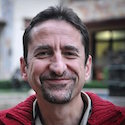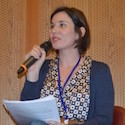Explaining the New Way of Working: Follow-up questions
On 5 October 2017, more than 250 online participants gathered online for the fifth session in ICVA’s and PHAP’s learning stream on humanitarian coordination. The event focused on The New Way of Working (NWOW), a new approach to response adopted by eight UN entities during the World Humanitarian Summit in order to work towards collective outcomes across the humanitarian, development, and – when appropriate – peace communities.
Bruno Lemarquis, Acting Director of UNDP’s Crisis Response Unit, jointly presented with Hansjoerg Strohmeyer, OCHA’s Director of Policy, an overview of the main aspects surrounding the NWOW – its focus areas, current challenges, and next steps in its implementation. Their intervention was followed by two NGO representatives – Lise Fouquat from Action Against Hunger and James Curtis from the Danish Refugee Council – who discussed the main risks and opportunities that the NWOW could entail for NGOs.
Apart from answering questions live during the event (which you can listen to in the event recording), the four experts have also answered follow-up questions from the event participants, which you will find on this page.
“Bruno mentioned the importance of collecting evidence and extracting lessons from the field, are you undertaking any kind of specific research for this? Are there any accountability mechanisms being put in place in order to ensure the NWOW is being efficiently implemented?”
- Early Recovery Advisor, Canada & Disaster Risk Reduction & Response Director, Philippines
 Bruno Lemarquis
Bruno LemarquisWe are continuously collecting evidence and extracting lessons from the field through various channels, including through our regular interaction with colleagues at the country level, through missions, and through workshops and other events. In addition, we are embarking on a more comprehensive exercise of collecting evidence with a more solid methodology, with a view to share further lessons on promising practices, as well as to identify bottlenecks that need to be addressed at HQ level. As for accountability mechanisms within the UN, this is partly being addressed through the newly established high-level Joint Steering Committee to advance Humanitarian and Development Collaboration which is expected to agree on a common light methodology for assessing the key measures for success.
“Bruno, when we talk of inter-agency missions, or peer exchanges, how do we see all players – UN, INGOs, NNGOs, LNGOs, and governments joining forces and collaborating? Are there any identified best practices or successful case studies?”
- Partnership and Capacity Development Advisor, India
 Bruno Lemarquis
Bruno LemarquisFrom our side it is clear that there is a wide range of actors who are key for the success of the NWOW, including (in addition to UN actors) Member States, national and local actors, NGOs and International Financial Institutions (IFIs). The work on collecting evidence mentioned above will also look into lessons on how best to bring all relevant actors into the process at country level. We are starting to see interesting country case examples of strong NGO engagement in the Common Country Assessments and UN Development Assistance Frameworks (UNDAFs).
“Hansjoerg, in what ways are you giving field colleagues leeway to adopt approaches when strategies and guidelines are simply passed to them for implementation?”
- PhD Researcher, Ireland
 Hansjoerg Strohmeyer
Hansjoerg StrohmeyerThe NWOW was first described in the Secretary-General’s report for the World Humanitarian Summit, and is at the centre of the Commitment to Action signed by the Secretary-General and 9 UN Principals. As such, the idea or concept of the NWOW has provided operational partners, UN Resident and Humanitarian Coordinators (RC/HCs), and donors with the conceptual basis and impetus to try new approaches and adapt existing strategies and guidelines. From the beginning, however, we made the conscious decision to initially let the implementation of the NWOW grow organically from the field, and we are now seeing how it is being advanced and contextualized in several countries where planning and programming is starting to shift towards joint collective outcomes. As mentioned by Bruno, in early 2018, in-depth field research and interviews will be carried out in order to document emerging good practice, which will in turn inform any guidance to be developed around the NWOW.
“Many protracted crises requiring a humanitarian and development response have a significant regional or cross-border dimension. How does the NWOW aim to specifically address this issue?”
- Director, External Engagement and Policy, INGO, Canada
 Bruno Lemarquis
Bruno LemarquisRegional or cross-border dimensions can certainly be included, where relevant, and in line with the strong focus on avoiding a one-size-fits-all approach and the key importance of tailoring the operationalization of the NWOW the specific context.
 Hansjoerg Strohmeyer
Hansjoerg StrohmeyerWhile much of the focus on the NWOW has been on adapting country-based processes, participants to regional consultations on the NWOW that took place in Dakar in January, and that will take place in Entebbe in November 2017, have highlighted the need to focus more on the regional or cross-border dimension of need, risk, and vulnerability.
In this regard, the element of pooling data and conducting joint analysis on need, risk, and vulnerability as a basis for better joined-up planning is particularly relevant. The regional analysis for the Horn of Africa and recommendations for collective action that the Intergovernmental Authority on Development (IGAD) developed a couple of years ago is a good, early example of applying this approach to the regional context.
"I do not really agree that, when considering longer-term needs in the design and delivery of emergency response, we may risk to slow down the response... Do you have examples where this risk has been identified and accommodated so that taking a longer-term view did not delay emergency action? How can this be avoided?"
- Consultant, Independent, UK

Lise Fouquat
This is a message especially for donors. Humanitarian NGOs usually go in without waiting for a Humanitarian Response Plan (HRP) to be drafted, circulated, commented on, agreed upon, etc. But they often do so on their own, limited resources – responding already quite slow in certain cases. The risk, when we want to include longer term plans into emergency plans, is therefore that donors might wait for these longer-term plans to be made before disbursing humanitarian funding. Yet we are already advocating for quicker and more flexible funding to be able to respond appropriately and save lives. We cannot delay these responses even more because we are busy making nice-looking plans while people’s lives are at risk. This is true for the onset of a crisis. What we all want to change of course is the response we bring when crises become protracted, and where indeed we need to integrate life-saving and sustainable responses, one being complementary to the other. In terms of solutions, I think this is a long and complex discussion we want to have with the donors so that we are all clear on field’s realities and constraints. Ideas and suggestions are welcome!

James Curtis
I also do not agree that when considering longer-term needs in the design and delivery of emergency response, we necessarily risk slowing down the response. Considering medium and longer-term perspectives at the onset of an emergency does not mean taking time out from the emergency response, it could however require additional capacity and different actors as well as the leadership and the commitment to take the specific circumstances into consideration and make appropriate decisions on when to introduce discussions, assessments, planning for and the integration or transition to more development oriented programming. Developing deeper guidance on this for all actors and examples of best practices will be key to ensuring an efficient response and transition.
"Based on your own experience in Djibouti and Ethiopia, how does the Comprehensive Refugee Response Framework (CRRF) aligns with the NWOW?"
- Intern, INGO, Switzerland
 James Curtis
James CurtisThe CRRF is definitely a step in the right direction. For INGOs, it has encouraged discussion around what our short, medium and longer-term objectives really are and how best we can achieve them. It is stimulating self-reflection on where our individual strengths are and perhaps how we can work more collaboratively in the future to achieve collective outcomes. In terms of alignment, CRRF in my opinion is only part of a bigger picture, but plays a key role because it allows for us to think and plan within a tangible framework. As CRRF is a work in progress in both Ethiopia and Djibouti, we cannot underestimate our own influence in ensuring that it will align the way we, as INGOs, think it should.
"In light of the NWOW, how can we avoid the risk of increasing the participation of the military in integrated missions in a given country? How can we avoid that funding may be diverted for military purposes?"
- Consultant, Independent, France

Lise Fouquat
This is precisely our concern. We are currently going towards more integration of everyone’s objectives, plans, etc. That means civil-military coordination needs to change from “communication between the two worlds” to “mutual respect and understanding of each other’s role and importance”, which is often not the case. At political level, there seems to be a growing understanding of the importance of humanitarian and development programs, including for peace and stabilization objectives. In many cases, military operations fail to bring lasting solutions to people’s plight, by hindering principled humanitarian action, but also sometimes by further fueling conflicts.
The structures and mechanisms that will be put in place in this NWOW can be designed in a way that improves communications and mutual understanding, instead of giving priority to military agendas. But humanitarian actors need to strongly advocate for that because others, with different agendas, will advocate very effectively for their concerns to be taken into account. NGOs and UN humanitarian organizations need to engage in that conversation, propose solutions to mitigate the risks, and be convincing about those solutions. Funding on the other hand is a different matter. I believe this growing recognition of development as a pre-requisite for peace could give more importance to the aid sector in general. That is especially true for development funding. The real danger for now is for humanitarian funding that will probably be diverted more and more towards development without necessarily having the structures, plans and actors in place.
You can access the rest of the Q&A as well as further resources on the event page.